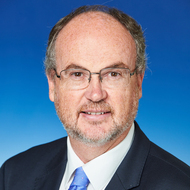In a world-first, the largest survey of airborne electromagnetic (AEM) data has been collected across all of Western Australia.
| Date: | Monday, 24 October 2022 |
|---|
This data collection will increase our understanding of the State's geology and resource potential - offering industry important insights to inform more targeted surveying.
Minister for Resources and Northern Australia Madeleine King said she was very happy to announce this important data collection, mapping the conductivity of the Earth down to 500 metres, was now complete.
"This data will deepen our understanding of groundwater, minerals, including critical minerals, and hydrogen storage which are all essential in our transition to net zero emissions by 2050," Minister King said.
"This data is already being used by industry and the CSIRO to progress exploration for rare earth element-bearing clays and other minerals which will be key to our clean energy future.
"As we strive towards our new net zero economy, we have already seen this data be used to map salt for hydrogen storage, uncovering great potential for the development of multiple caverns underground in salt deposits."
The mapping program was made possible through the Geoscience Australia's Exploring for the Future program and the Western Australian Government's Exploration Incentive Scheme led by the Geological Survey of Western Australia (GSWA).
Western Australian Minister for Mines and Petroleum Bill Johnston congratulated GSWA and Geoscience Australia for successfully completing this complex project.
"The survey is a major achievement that will keep Western Australia at the forefront of geoscientific understanding," Minister Johnston said.
"Exploration is the lifeblood of our resources sector, and I am confident the AEM survey's data will help uncover the State's next big discovery.
"It's encouraging to see that exploration companies are already using survey data to target in-demand battery and critical minerals such as nickel, graphite and rare earth elements."
Several companies have already used the survey's early-release AEM data to target basement anomalies identified in the survey lines.
Earlier this year, Buxton Resources located an unidentified bedrock conductor at its Narryer nickel-copper-platinum group elements (PGE) project in the West Kimberley.
While Mamba Exploration has located targets at its Copper Flats project in the East Kimberley and Torque Metals has found anomalies that may indicate nickel mineralisation at its Paris Project in the Eastern Goldfields.
Minister King said the Australian Government was committed to working with state and territory governments to super-charge Australia's transition to becoming a clean energy superpower.
"This work with Western Australia is critical to our ongoing transition and is just one way we are delivering on that commitment."
The $225 million Exploring for the Future program has been gathering precompetitive data about Australia's geology since 2016.
It puts key information in the hands of Australians, creating jobs for regional communities and enabling government, communities and industry to make more informed decisions.
Much of the data collected for Western Australia is already available via the Exploring for the Future Data Discovery Portal, with the final instalment due to be released in the New Year.

